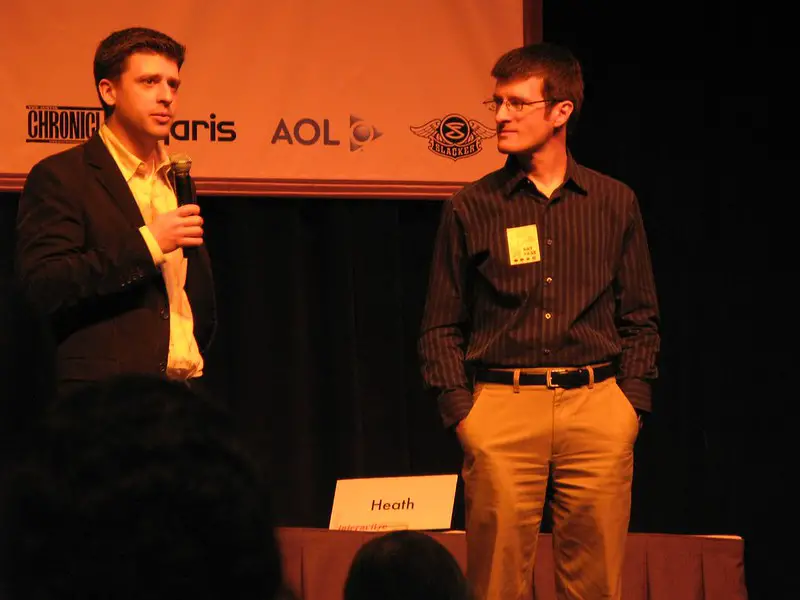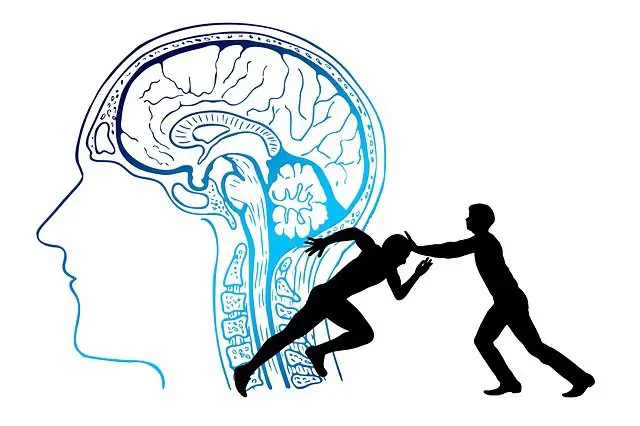Decisions we make are essential parts of our lives. Each time we make the right choice, it brings us a better life – it could be deciding which coffee you take, or choosing your romantic partner.
In this book, Decisive, Chip and Dan Heath put in plain words that we mostly don’t take the rightest decisions, because we don’t consider all the possibilities; we’re under the influence of our previous decisions, subjective values, and current emotional states; also we have no doubts about our decisions.
In the book, the authors also explain the potential negative effects of bad decision-making – or avoiding making decisions, as was the case with Kodak, one of the predominant producers of photographic film.
Kodak realized that analog photography would be seized by digital photography soon, in the early 1980s. However, they didn’t make ideal decision making, so the company couldn’t take proper action. Ultimately, by 2002, the sales of the digital cameras went beyond the sales of analog cameras, as a result, Kodak felt behind.
Try Audible and Get Two Free Audiobooks

Chapter 1 – Even if you feel puzzled when making a decision, don’t falsely set limits to your possibilities.
Generally speaking, our perception of decision-making suggests that we have to choose one of two available options. That could be right, we mostly get obligated to decide on doing or not doing a given thing. But limiting the decision-making process into a simple, two-fold choice makes us ignorant about the alternatives.
Whenever you feel stuck in such a situation, remember that you don’t have to be limited by only two predetermined options, instead, there might be many other alternative ways.
Take teenagers as examples. They often find themselves in a situation where they have to make a decision. It could be about whether they should smoke or go to a party.
As easily realized, these decision-makings don’t include assessment of all the available alternatives, the teens make them by voting for or against a particular option. However, deciding to go to that party or not, would be much easier if the teen reckoned another alternative. For example, he could also watch a football game at home instead of attending the party.

Considering the probable “Opportunity cost” of your choice is another method to achieve stressful decision making. This is simply asking yourself what this choice will cost to you, to put it differently, what you will sacrifice for it.
Let’s think, you cannot decide which sound system you buy, either an elegant stereo for $1000 or a simpler model for $700.
To calculate the opportunity cost, imagine if you bought the simpler one and saved $300, what would you do with that money? After this consideration, would you be willing to have the expensive one and greater quality, or the just useable one and extra $300?
Astonishingly, we hardly remember the opportunity costs. Research has shown that when people were asked to buy a video that cost nearly $14.99 or not has it at all, the percentage of people who didn’t buy it was 25%. However, when the statement “ Keep the $14.99 for other purchases,” was added to the previous choice, 45% decided not to buy it.
So, the results of that study demonstrate that even if the options remained the same, just a slight alerting about the possibility of other alternatives could bring better decision making
Chapter 2 – When you try to decide something, don’t get stuck only with a particular idea, review various options till you find the best solution.
Generally speaking, when we want to solve a problem, we remain stick to one single option. However, if we checked out more ways, the results could be more beneficial.
This method is called multitracking – it means assessing various options at the same time- and its positive effects on decision-making can be enormous.
For example, in a study, researchers appointed graphic designers that were divided into two groups to prepare a poster advertisement for an online magazine. The first group was received feedback after each time they designed one. On the other hand, the other group offered three options before receiving their first feedback. Then they reduced their option into two and was received another feedback. After this step, they decided on the final design.
Guess what? Magazine editors, professional ad execs, and testers liked more the ads created by the second group.
Maybe, that’s because you become less inclined to each option if you have more alternatives to consider, and thanks to that you might feel more flexible in your decision.

Another possible reason might be that when assessing several alternatives, you always create a Plan B. So if Plan A collapses, you have still another solution to implement.
However, keep alerted about the risk of choice surplus, because too many alternatives can ruin your decision-making process. For instance, studies have demonstrated that people who tasted 6 kinds of jam on one day were ten times more inclined to decide to buy a jar rather than the people who were offered 24 kinds of jams on one day.
All in all, do not add 24 extra options into your decision-making, just a few more would be enough.
Chapter 3 – Check out the answers found by someone else to solve the same problem.
Sometimes, we mistakenly believe that we’re the first to deal with a particular problem.
However, the problem you face for the first time in your life might have already solved by someone else. You just don’t recognize it because of some subtle differences.
Whenever you search for a way to get over a certain problem, it would be wise to delve into how other people are handling it. For example, if you have a business-related concern, take a look at how your fellow businessmen handled it. This led you to find the ideal solution.
Let’s think of Sam Walton, the founder of Walmart. In 1954, he traveled for 12 hours just to see a new model of sales counter at Ben Franklin variety stores, which was the alternative to the old system that separate counter according to the type of the products like kitchen supplies, groceries, etc.

Inspired by what he had seen, Walton began to use that new invention in his stores. Throughout his business life, Walton observed what his competitors were doing and got inspired by them. He never hesitated to admit that almost every idea of him was originally someone else’s.
In addition to the previously mentioned method, making analogies also helps us to deal with certain problems with a wider approach, so it leads us to solutions.
Let’s think, the establishment of Speedo’s Fastskin Swimsuit.
Its creator, Fiona Fairhurst, designed this suit after examining “anything that moves fast” – for example, sharks, torpedoes, space shuttles, etc. She made particular researches about the quality of sharkskin, and the pattern of the torpedoes, and finally concluded that he needed a fabric that includes pivotal aspects of both -an unevenness to prevent getting dragged and a large coverage capacity to get the swimmer’s body to a torpedo-like form.
She focused on the general idea, the speed rather than limiting her imagination only with inventing a fast swimsuit. This thinking led her to brilliant success and made her highly advantageous in the market, so the authorities banned using that material in 2010.
As the example shows, being ready to get inspired by different domains could provide you with brilliant solutions that you normally wouldn’t be able to think of.
Chapter 4 – Pretend to be the devil’s advocate and produce some anti-thesis of your decision to get rid of any bias.
There’s nothing weird to invest in the options that we find desirable the most when we make a decision. However, it doesn’t mean that they are the best.
Even though our inclinations create partiality during our decision-making process, it is possible to reduce the negative influence of our likes and dislikes by implementing some methods.
As the first step, always be agree to disagree with someone else. Evaluate all the possible reasons that would transform the options you eliminated before into the best choices.
This doesn’t mean contradicting your preferences or taking a position on their sides, instead, by doing this you assess reasonable restraints of each option and make it easy to disagree without any resentment.
If you’re bad at playing the devil’s advocate, then let someone else do it for you. Most importantly allow him or her to come with the most convincing contra-argument of the option that you consider as the best.

Furthermore, raise undesirable questions to let the opposing information show up.
For example, imagine that you receive a job offer from a prestigious law firm. You’ll be paid very well, have a good working atmosphere; all in all, it’s a desirable position in a reputable company.
When you meet the lawyers, don’t waste your time with useless questions, for example with asking whether they are satisfied with the company. Instead, ask your future co-workers whether they can often have dinner at home, whether they work until late, etc. Or, learn how many lawyers they have employed recently, and how many of them still stay? Has the CEO changed so many secretaries in the last five years?
So, we have examined some effective methods to interrogate our decisions. There is also another way. It is to check how our choices have resulted in other people.
Chapter 5 – Take a look at your situation from the outside, think how it looks like.
We usually assume that the situations we’re going through are unique for us, however, looking at how others living a similar problem have coped. Our problems are more identical than we’d believe.
Looking at how similar situations typically evolve is a good way of doing this. For example, let’s consider Jack, a talented Thais Cook, who has an idea of opening a restaurant. His inner voice is very optimistic; focuses on the wonderful position of the 4th street, its dynamic food traffic, and the neighboring Thai restaurants.
On the other hand, when he was to think as an outsider, he probably would concern about how the people who had the same idea got along. So, this outside view could focus on the base rates which indicates a high percentage of bankrupting restaurants within their first three years.
Although that doesn’t necessarily mean Jack must give up his plans, he should carefully consider this aspect before starting it.
Secondly, although asking experts’ projections about your situation sounds like a good idea, you should ask them only about the base rates. Because your case might make them develop an inside look at the situation, so they might also overlook the base rates.

So, what you need to learn from them is the analysis, not the predictions. For instance, a lawyer could tell you how many cases like yours have concluded without going to trial, however, he can’t precisely know whether your problem will be solved without a trial.
But, do not immediately accept what you hear of, even the opinions that sound very rational. Never forget to delve into them with an analytical eye.
For example, let’s say as a Thai cousin lover, you’re looking for a truly decent Thai restaurant, however, the very best you’ve encountered so far has only a 3.5 ratings (out of 5).
When you read the reviews, you realize that people mostly gave low rates for the restaurant because of the prices of the foods, they found the food exceptional though.
You’re not concerned about the price, so the given base rate of the restaurant doesn’t tell you the essential information that you need to know.
Chapter 6 – Leave the plans aside, instead, carry out a harmless trial and see how it’ll go.
Generally speaking, instead of jumping through the deep, it would be safe to first dip your feet in the water. This small process, running a small experiment of your ideas is called ooching.
Instead of letting our insecure beliefs make us decide on something, give your ideas a harmless try; it would be a wiser strategy.
Get an internship, for example, because it provides you with a quick look into the profession you want, so you can choose to continue or give up.
Imagine your daughter is attracted by pursuing a career in law, as she thinks that such a profession will make her life meaningful and pay her a notable salary. It would be a normal reaction to not be satisfied with her decision based on no evidence, but if she had told you that decision after completing a traineeship in a law firm, you would have been convinced.
Also, we aren’t good at seeing what’s coming. So, we’d better stop trusting our predictions and test.

For instance, many companies employ their workers by assessing the interviews as they are under the influence of the interview illusion which suggests that they’ve perfectly assessed the interviewees. However, the ideal way is ooching, by providing a potential employee with a chance to shine up.
However, ooching is not always possible. In some cases, total dedication appears as an obligation even from the very beginning. For example, leaving temporarily your sport team just to experience how it feels is not something you can do. Because we shouldn’t break our responsibilities to our teammates. Also, the university isn’t such a place where we can visit just to see if it is our calling. It’s quite the opposite: we should be sure about whether the subject we choose fits us or not.
So, instead of wasting your time by considering whether you should be strict with your favorite idea, it would be wise to try it on a small scale.
Chapter 7 – If you want to have a broader understanding of your decision, give adequate attention to the future.
Our temporary priorities have determinative impacts on our decisions what we believe as important at the moment captures our choices. However, letting it happen might cause some negative results. Fortunately, there are some effective ways to predict long-term consequences.
An effective way is being emotionally distant and it is possible if we can visualize the future outcomes by developing a future perspective
Since our existing emotions are explicit and accurate unlike the future ones, we often fall into this trap. This is also used as a marketing strategy; sales associates attempt to stimulate us, so we would buy their products based on that temporary excitement.
The strategy called 10/10/10 is one of the simplest and effective ways to balance their influence: Test your upcoming emotions by questioning how you would feel about your choice after 10 minutes, 10 months, and maybe 10 years.
Another method is to pretend as an observer, or as an outsider. Imagine you’re thinking about calling someone you’ve met before thanks to one of your classes. However, you haven’t had so much conversation together, so you’re not sure he will remember you.

So, there are two different ways, you will choose either :
(a) trying to know him a bit more after then you will call him
(b) calling him anyway.
People usually choose the first one for themselves but choose the second one when someone else is of concern. Because we don’t get easily influenced by our short-term emotions about the decisions that someone else has to make.
So, if you‘re able to look at your decisions from an outsider standpoint, you will recognize the most critical issues. Usually, these are the points that go unnoticed while you’re busy with less important ones.
All in all, asking what you would say your friend to do would help you to choose the best way. So, whenever you feel in a dilemma, pretend as an observer and ask this question.
Chapter 8 – If a conflict of values is concerned, recognize what your very priorities are.
Short-term emotions are not the only problems in our decision-making process. The ambiguity of our priorities distracts us as well. For example, the excitement of a job offer would disappear after a few days, but you could be still unsure what to choose: either staying in your current place or leave for the new offer.
What you should do is determining your essential priorities. Be aware of what you’re most important long-term values, aims, and motivations are.
Should you stay at your current firm where you can earn enough money and have occasions to go on holiday, as well as, have enough time to spend with your family and friends? Or should you accept the new job offer, which will give you more responsibility at your charge but pay you better?

Maybe you’re the mother of young children and your family is your priority. Or maybe your children have already grown up and become self-sufficient adults so you’re searching for a new challenge. No matter what, determining your essential priorities by doing such will assist you when making a decision.
Just after you’ve decided on your core priorities, you should be strict about realizing them. Life is a short journey, so if you want to reserve your time to do whatever your priorities require, you must control the time you spent doing other things.
Although we’d like to believe that doing everything by multitasking is possible, the reality isn’t like that. For instance, if someone prioritizes doing the exercise over reading, it means that he’d prefer fitness more than he cares about knowledge, so he’ll need to prepare a well-designed program.
Ask yourself, what are you ready to sacrifice, so in the end, you’ll have more energy and time to give for your core priorities?
Let’s say your schedule is your final notice board for your priorities. If the preferences can be calculated by the time spent on it, what would appear as your essential priorities? Googling the job announcement on your computer or doing activities with your wife and children?
Chapter 9 – To take the risk of possible consequences of your choices, consider the future as a scale, not a certain point.
We usually visualize only one potential outcome of our actions and reduce our decisions on that single certain idea that explains how things will evolve. However, there’s no guaranteed way to predict the future correctly.
To overcome this nonsense inclination, think equally both the worst and the best possible scenarios. This thinking will help you to understand where you are at the moment and make you ready to act properly when the worst consequence gets close to happening. As an assisting technique, you can apply prospective hindsight – an idea that humans are better at evaluating facts more than possibilities, which is an advantage. Face yourself, “It’s has been one year, and we’ve lost. For what reasons?”, however, avoid the questions like “What would cause me to lose, what could appear and I would end up in failure?”
There’s another thing that you need to aware of: get ready to manage any possible success. For instance, let’s say you initiate a new product to the market, do you have enough supplies to meet the demands if it successfully accepted by the customers?

Furthermore, you need a safety agent to become ready for any unpredictable development.
Think of the elevator as an example: its cables are eleven times more durable than required for it to work. Engineers consider all the details like how much weight that elevator will carry, how tension will be on the cables, and which materials could be proper to carry that weight, etc.- so at the end they decided on eleven.
We overconfidently trust our knowledge and capabilities, so allow yourself to use that confidence to balance our predictions.
So, when scheduling your next plan, the steps that you should follow are these: Be careful about not exceeding the deadline, limit the time that the project should take at most, and also count as a safety factor for guarantee. For example, if you guess designing a website takes three days and it has to be done in time, add just a half-day as a safety factor.
Chapter 10 – Adjust a tripwire to change from autopilot to manual command and apply a decision.
When something becomes a part of our everyday routine, the gradual changes usually go unnoticed, and this could expanse to a radical situation. Thus, there’s a need for a metaphorical “tripwire” which is a warning to make us care about our behaviors and stimulate us to get correct when required.
To achieve this, you can set some obvious signals that could save you from any “autopilot behavior.”
For example, Zappos, an American shoe seller, offer their workers $4000 in return for their resignation. So, if they’re not like working there anymore, they can take the money and easily leave.
This is an example of a tripwire that help unsatisfied employers to evaluate their conditions. It reduces indecisive actions caused by the habits and encourages a healthy decision-making process. ( A bonus: by doing this, the firm can get rid of ineffective staff)
You can also determine deadlines, and compartments to keep you safe from getting distracted from your habits. Deadlines keep us motivated to apply a decision that we would normally postpone. For example, one research paid college students $5 to fill out a survey. Without a deadline, only 25% of the students completed the survey, whereas this percentage rose to 66% when the deadline was given as a five-day.

Compartments also function just like that. For example, dispense the smaller amount of money instead of putting all your saving at one time, it could encourage healthy attention. Each step of your compartmental investment functions as a tripwire to give you signals that everything is under control.
Finally, you can also try to use some labels to notice positive or negative elements.
For example, pilots are trained with a specific notion called leemers, which is to explain the ambiguous emotions that there’s something wrong, but the reason is not clear. Considering that they name this weird feeling, it can be said that the pilots can’t ignore their feelings.
As it’s clear, when the lives of people are concerned, even just a weird feeling can appear as a tripwire that stimulates you to be more careful in a given situation.
As you can see, when what’s at stake are the lives of many people, even a nagging feeling can act as a tripwire prompting you to pay conscious attention to the situation.
Decisive: How to Make Better Choices in Life and Work by Chip Heath, Dan Heath Book Review
Whenever you need to decide something, apply the WRAP-process: Expand your possibilities, Run a small test of your ideas, establish an observer perspective, and ready to be wrong.
Set a deadline.
So, next time you think about doing exercise, prepare a good schedule for it. This will help you to realize what your priorities(exercise) are and make you sure that you won’t sacrifice it to anything more urgent, to do dishes for example.
Search for other options.
If you’d like to know whether should attend an invitation or not, makeup at least two other options, for example, watching a movie, or taking a good rest at your bed and taking a walk the next day. By doing this, you can evaluate more effectively what other alternatives you have.
Try Audible and Get Two Free Audiobooks
